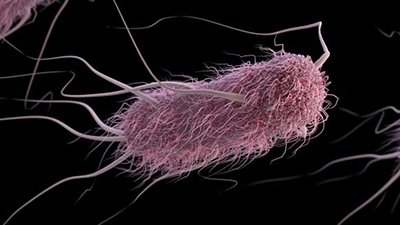It's all in the way we see things
The single-celled animals
Originally published in Creation 2, no 3 (July 1979): 4-8.
This series of articles is designed to overcome the problem many people have when they study or read biology. That is, they may not believe in evolution, but they cannot find a way to say this or put it into practice since everything they read or think is done in evolutionary terms. This series has been prepared particularly for use in high school biology courses by the Creation Science Biology Committee and covers selected organisms from all major phyla.
Ameba proteus
Have you ever realized how many different ‘bits’ go to make up a human being?
Millions of muscle cells, blood and nerve cells and bone cells are needed just to allow you to lift one finger one millimeter. Man is truly an engineering marvel. What then of an animal that can move, eat, respond to stimuli, capture, kill and reproduce—yet it is just one single cell. These activities compose the everyday world of the Protozoan. Commonly described as ‘primitive and simple’, the protozoans are anything but that! This definition is outstanding for the magnitude of the erroneous impression it makes. No protozoan is simple and none are primitive. Let us look at the ameba as an example of protozoa, and then at how an "analysis" and "description" of the ameba very much depends on belief in how it got here.
The ameba is small, usually no bigger than a dot (.); most are "friendly" to man but some cause serious diseases. They will live in a range of environments from mouth to mountain lakes and many can survive drought in a special ‘case’ they make for themselves.
The descriptions of the ameba which follow are those by (1) a person accepting the evolutionary theory and (2) a person who accepts that God deliberately created the first protozoans and had a purpose for them then and now. Note the difference in description which is produced by the different starting points.
Evolutionary description
Pseudopod: This relatively inefficient means of locomotion makes ameba an easy prey for larger animals.
Protoplasm: The difference between the salt level inside the protoplasm and the water outside creates real problems for the animals.
Food vacuole: The surprising similarity of the method by which the ameba digests food and the way in which higher animals digest food shows their evolutionary relationship.
Contractile vacuole: Due to the problems caused by the salt level in the animal, amebas have evolved a number of contractile vacuoles which prevent it bursting and just enable efficiency.
Nucleus: This control center of the cell contains the limited amount of information needed by such a primitive cell.
Creationary description
Pseudopod: Or false foot, provides a unique and instantly reversible motion for the ameba and a means to catch its food.
Protoplasm: The chemicals of protoplasm often cause water to flow into the animal. This water level is controlled by the contractile vacuole.
Food vacuole: This minature stomach copes very efficiently with food digestion.
Contractile vacuole: This "bubble" collects any excess water that enters the cell and removes it so that the animal is always at peak efficiency.
Nucleus: This is the control center of the cell and contains in complex coded form most of the animal's "inheritance blueprint".
Evolutionary comments
Protozoa are:
(a) simple
(b) non-specialized
(c) primitive
Origin
Protozoa have evolved from chemicals but no evidence is available to provide the detailed steps of this process although the general direction is well-known.
Exam questions
(a) List the problems faced by a fresh water protozoan and comment
on how it has overcome them.
(b) Discuss the statement "without the evolution of a circulation system, animals
could not grow beyond a certain size". Illustrate your answer by reference to
Ameba descriptions.
Creationary comments
Protozoa are:
(a) single-celled
(b) multifunctional
(c) unique
Origin
Protozoa are the products of a deliberate creation and whose basic plan has remained similar since the time of creation.
Exam questions
(a) Discuss the ways in which the structures within a fresh water
protozoan suit it for its habitat.
(b) Discuss the statement "the surface area to volume ratio of an ameba
enables it to live efficiently without a circulation system."

Answers in Genesis is an apologetics ministry, dedicated to helping Christians defend their faith and proclaim the good news of Jesus Christ.
- Customer Service 800.778.3390
- © 2024 Answers in Genesis




